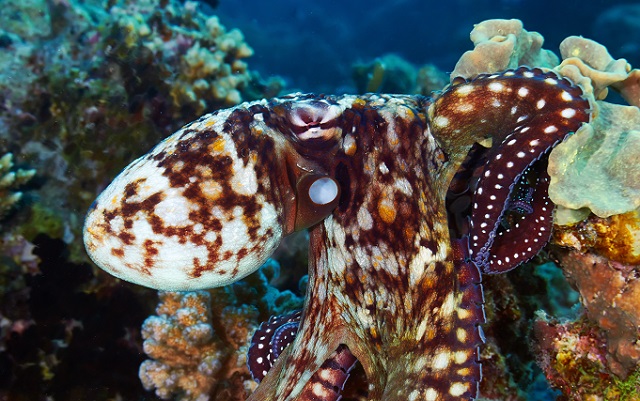
Image credit: serg_dribrova / Shutterstock.com
Researchers at the University of Houston have designed an optoelectronic camouflage system inspired by cephalopod skins, which enables a material to read and adapt to its environment automatically and thus seamlessly blend with its surroundings.
This technology has been published in a paper in the Proceedings of the National Academy of Science journal.
This material may find applications in industry or military and this technology may also be applied to wearable electronics and toys.
The lead author of the paper is Cunjiang Yu, University of Houston assistant professor of mechanical engineering. The inspiration for this technology, cephalopod, are marine animals such as squid, cuttlefish and octopuses that can change their color rapidly both as a warning signal and also for camouflage.
Other researchers in the project are Yonggang Huang of Northwestern University and John A. Rogers of the University of Illinois at Urbana-Champaign.
Shapeshifting Octopus, amazing camouflage
According to Cunjiang Yu, previously created camouflage systems did not adapt to their environment; however, this new device is capable of viewing the color and then matching it. This prototype model ideally works with shades of gray, black, and white, though Yu added that it could work in the complete color spectrum. The prototype is a small one-inch square, but for commercial purposes it can be scaled up.
The device’s flexible skin includes ultra-thin layers that combine switching components, semiconductor actuators, and light sensors having organic camouflaging materials and inorganic reflectors so as to enable self-directed matching to the background color.
According to the researchers, this system includes pixelated devices similar to each major element in the cephalopod skin except for central ocular organs and iridophores.
We are often seeking ways to emulate nature's inherent abilities, such as camouflage. Other examples include incorporating carbon nanotubes into spider's silk to produce a structural material and origami robots which are inspired by the folding of linear amino acid sequences.
Source: http://bit.ly/1sUb568
This News Feature Around the Web